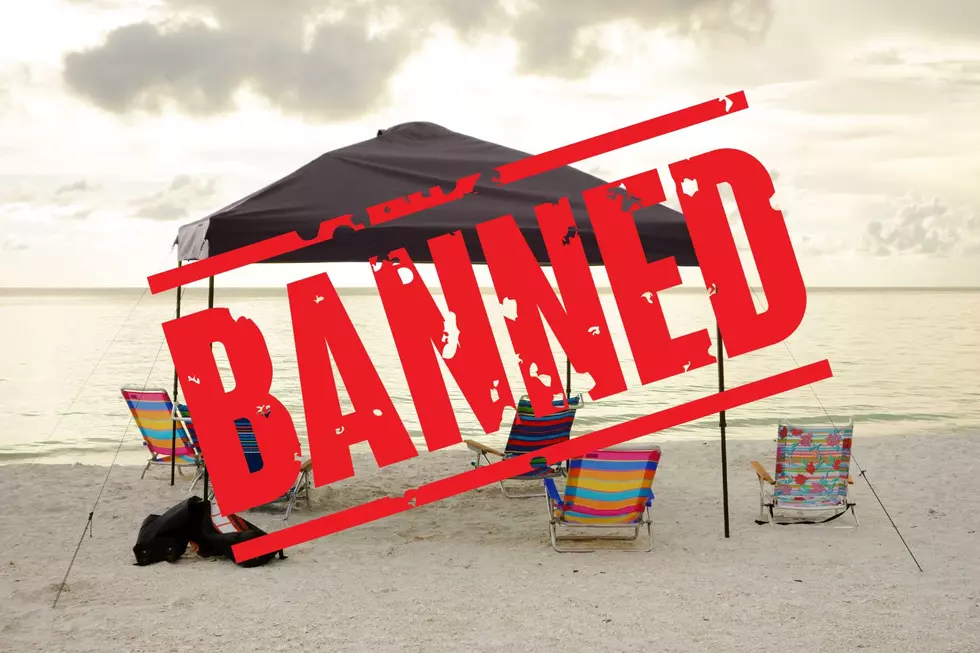
Do Your Kids Know How To Survive A New Jersey Rip Tide? Ocean Expert Don Walsh Gives Life Saving Advice
At my first live broadcast from the legendary Asbury Park boradwalk, I had the privilege of meeting local ocean expert Don Walsh. Talk about an impressive person...Don has made it his life's mission to teach others about ocean safety, to prepare Olympic swimmers and even prepare Navy SEAL candidates for rigorous water missions. So when I had questions about my kids and rip currents, I'm pretty sure I asked that right guy.
Just check out this resume...he's been competing in open water racing in distances from 1 mile up to 10K for the past 41 years. He's completed these marathon swims: Key West (12.5 miles) ... Mays Landing River (21 miles) ... Manhattan Island (28.5 miles - 3 times) ... and the Isle of Jersey in England (41.5 miles). He's coached at the club, high school & college levels. In addition, Don has traveled the country for 6 years working with two former Olympic swimmers and Olympic swim coaches to conduct swim clinics for high schools, colleges & adult triathletes. And for the past 22 years, he's been teaching Combat Side Stroke mentoring over 7,400 Navy SEAL candidates. Of course he didn't leave out the little ones...Don also authored a children's book on ocean water safety called "Teach the Beach."
Listen to Shannon Holly mornings on 94.3 The Point and download our free 94.3 The Point app.
What is the biggest danger we need to look out for when swimming in the ocean? Rip Currents ... typically we get a SE wind during the afternoons in summer. The winds push the surface water against the rock & wooden jetties, which creates rip current as the water rushes out to sea.
What safety tips would you offer to parents with kids who are chomping at the bit to swim? Even if you go to the same beach every summer, it's a good idea to talk to the lifeguards before going swimming. The storms change the bottom over the winter and where you were able to stand last summer, you may not be able to stand this summer. The lifeguards are the experts on the beach and they will advise you where to swim safely. As always ... "When in doubt don't go out!"
What defines a strong swimmer? A strong swimmer is someone who knows the proper technique and one who trains for the open water. Just because you can swim comfortably in a pool doesn't mean you will enjoy that same comfort in the ocean with waves, currents (rip currents & sweeps), tides and colder water than in a pool. Not to mention no visual feedback to keep you on course like lane lines and lines on the bottom of the pool.
How does someone condition themselves to hold their breath longer under water? Conditioning yourself to hold your breath underwater is not a good idea. Even though recruits have to swim underwater for the length of a 50 meter pool at BUDS (Basic Underwater Demolition SEALs), we are not allowed to teach our candidates as it's not safe. If a candidate pushes himself to his limit and passes out in a pool, it can be fatal. We teach them how to swim underwater efficiently but only for very short distances.
What do you do if you are caught up in a rip current or you are stranded in the water? Call for help & wave your arms to alert those on the beach. If you are caught in a rip current DO NOT fight the current, let it take you out to sea beyond the waves. Once you are past the waves, you can swim or doggie paddle around the current back to shore or float on your back until rescue arrives (first responder - police). You are very buoyant in salt water so it should be easy to float on your back.
Can we identify rip currents before going into the water and what would we experience if we got caught up in one? Rip currents are typically a different color from the rest of the water and are usually found next to a rock or wooden jetty. They may also be found in the middle of the beach if there is a break in the sand bar where water can collect and rush back out to sea. DO NOT fight the current ... swim or doggie paddle parallel to the beach to get out of the current. If you cannot swim or doggie paddle ... Flip ... Float ... & Follow ... Flip onto your back ... Float ... And Follow the current out past the waves & danger. Once out past the rip current, you can swim or doggie paddle back to shore. Keep in mind that a rip current DOES NOT pull you underwater, it pulls you out to sea beyond the waves.
Take a Dip In The Most Breathtaking Backyard Pools in New Jersey
KEEP READING: See the richest person in every state
More From 105.7 The Hawk










